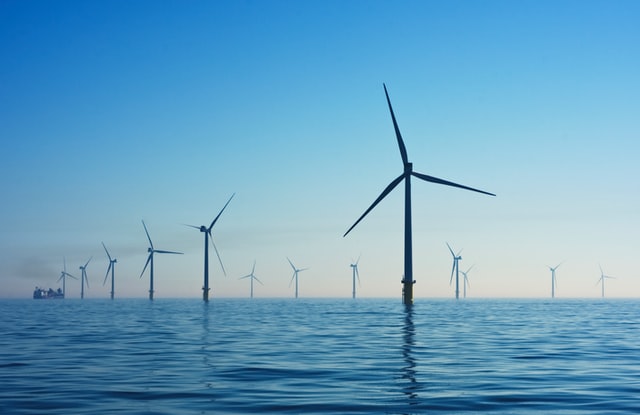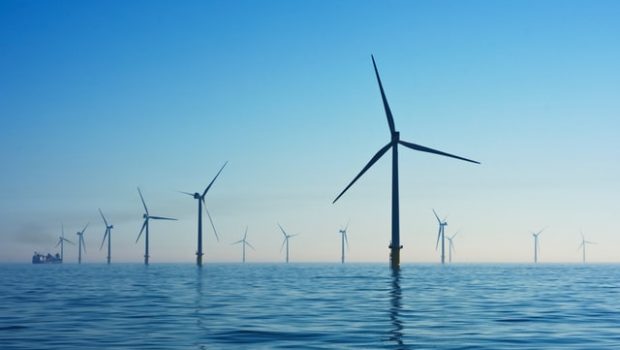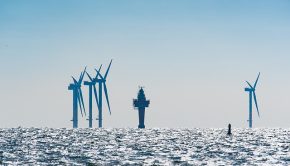New coalition says offshore wind could power 10% of world’s energy demand –
New coalition says offshore wind could power 10% of world’s energy demand –

On June 8, World Ocean Day, the
Ocean Renewable Energy Action Coalition (OREAC) announced its vision for 1,400
GW of offshore wind globally by 2050 to drive decarbonization and a green
economic recovery from the COVID-19 crisis.
This vision of 1400 GW of
offshore wind capacity goes well beyond current offshore wind forecasts, but
OREAC says it is possible considering the resource potential, technology
innovation, and government appetite to position offshore wind at the center of
the global energy transition. In addition, says OREAC, it would go a long way
to helping the world economy recover from the COVID-19-induced recession.
OREAC estimates that offshore
wind could provide around 24 million years of employment (defined as
full-time work for one person per calendar year with 260 working days) by 2050,
if the 1,400 GW vision is achieved. This job creation potential is calculated
using IRENA data, and covers the full value chain of offshore wind, from
procurement to construction to decommissioning.
OREAC was formed in response to
the 2019 call for ocean-based climate action by the Ocean Panel, a group of 14
world leaders who last year called for “a sustainable ocean economy, where
effective protection, sustainable production and equitable prosperity go
hand-in-hand,” according to its website.
Offshore wind developers Ørsted
and Equinor are spearheading OREAC and the coalition also includes other players
in the global offshore wind industry: CWind, Global Marine Group, JERA, MHI
Vestas, MingYang Smart Energy, Mainstream Renewable Power, Shell, Siemens
Gamesa Renewable Energy, TenneT, and GE Renewable Energy. Additional partner organizations
include Global Wind Energy Council, World Resources Institute, UN Global
Compact, the Chinese Wind Energy Association and Ocean Energy Systems.
A report commissioned
by the Ocean Panel shows that ocean-based renewable energy, such as offshore
wind, floating solar, tidal and wave power, could meet nearly 10% of the global
annual greenhouse gas emissions reductions needed to remain on a
Paris-compliant 1.5°C pathway in 2050.
It estimates that up to 85% of
this decarbonization potential will come from offshore wind and says that 1,400
GW of offshore wind capacity would power one-tenth of global electricity demand
while saving over 3 billion tonnes of CO2 per year, equal to taking 800 million
cars off the road.
Benj Sykes, Head of Market
Development, Consenting and External Affairs at Ørsted, commented: “Over 30 GW
of [offshore wind] capacity is already installed, yet this is just the tip of
the iceberg for the massive growth potential of offshore wind. Working
alongside other technologies such as renewable hydrogen could further bolster
offshore wind’s ability to power economies across the world sustainably and at
a low cost.”
Stephen Bull, Senior Vice
President Offshore wind at Equinor, added: “The ongoing COVID-19 crisis has
forced us to take a step back and rethink the future we want to create for the
next generation. Going back to ‘normal’ is not an option if we want to build
more resilient economies and sustainable development pathways that will benefit
all citizens. Offshore wind can promote better health by reducing air
pollution, increase energy security by reducing dependence on expensive
imported fuels, save billions of litres of water, reduce the harmful
environmental, social and economic impacts of climate change, and be an
important driver of economic growth and job creation. While this may seem too
good to be true, the reality is that offshore wind is ready to deliver now. It
can provide all these benefits and more to drive a sustainable economic
recovery and contribute to thriving, sustainable economies of the future”.
Later this year, OREAC will
launch its roadmap for 2050, which will outline the actions needed to support
industry and policymakers in achieving the 1,400 GW vision.








